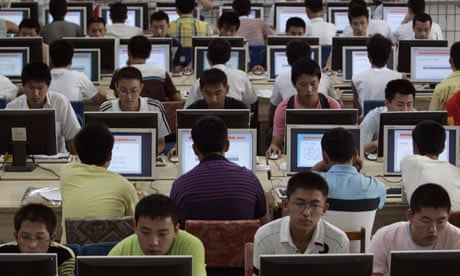The biggest challenge for someone inside China who wants to get around the Great Firewall is the teleological one: how do you search for information that is itself banned? Of necessity - because the Chinese government monitors internet use inside the country, and the data passing across the fibre-optic cables at three points where it goes international - such knowledge tends to spread by word of mouth.
For those who want to know what's not accessible inside China, there's whatblocked.com, which shows the present status of various sites and services. Sometimes whole sites vanish. "One day the site addresses just don't resolve," as a former Microsoft employee explained this week. "And the next day they do." Today, the site suggests that Twitter, Facebook, YouTube, Twitpic and Wikileaks are blocked; the BBC and Wikipedia are "partially blocked"; but Google News and Gmail are, at the moment, available.
Here are some of the ways Chinese surfers negotiate this online minefield:
A proxy server looks, to the firewall, like an innocent, permitted server somewhere on the web. But, on request, it will draw in any page or site from the web and deliver it to your computer. This will not defeat the content filter – although one implementation, called elgooG, is a search engine interface that provides all its results spelt backwards, defeating filters.
A VPN, or virtual private network, creates an encrypted tunnel between two points on the internet, say from a PC to a web server. Because it is encrypted, it can not be sampled. Where the connection surfaces, you can browse the internet untroubled. Its weakness is that encrypted traffic may attract attention because it's encrypted. Such services are freely advertised and provided in China – banks and foreign manufacturers, for instance, would not work without them.
Tor (the onion router) sets up a proxy server on the user's computer then sends encrypted signals to other Tor routers around the web. To the censors, it looks like more encrypted traffic.
Haystack, originally intended to help Iranians protest after last year's elections, is a free proxy-like system that hides the user's traffic inside "a continuous stream of innocent-looking requests". It also uses encryption, so people can get at any site without drawing attention to themselves.
